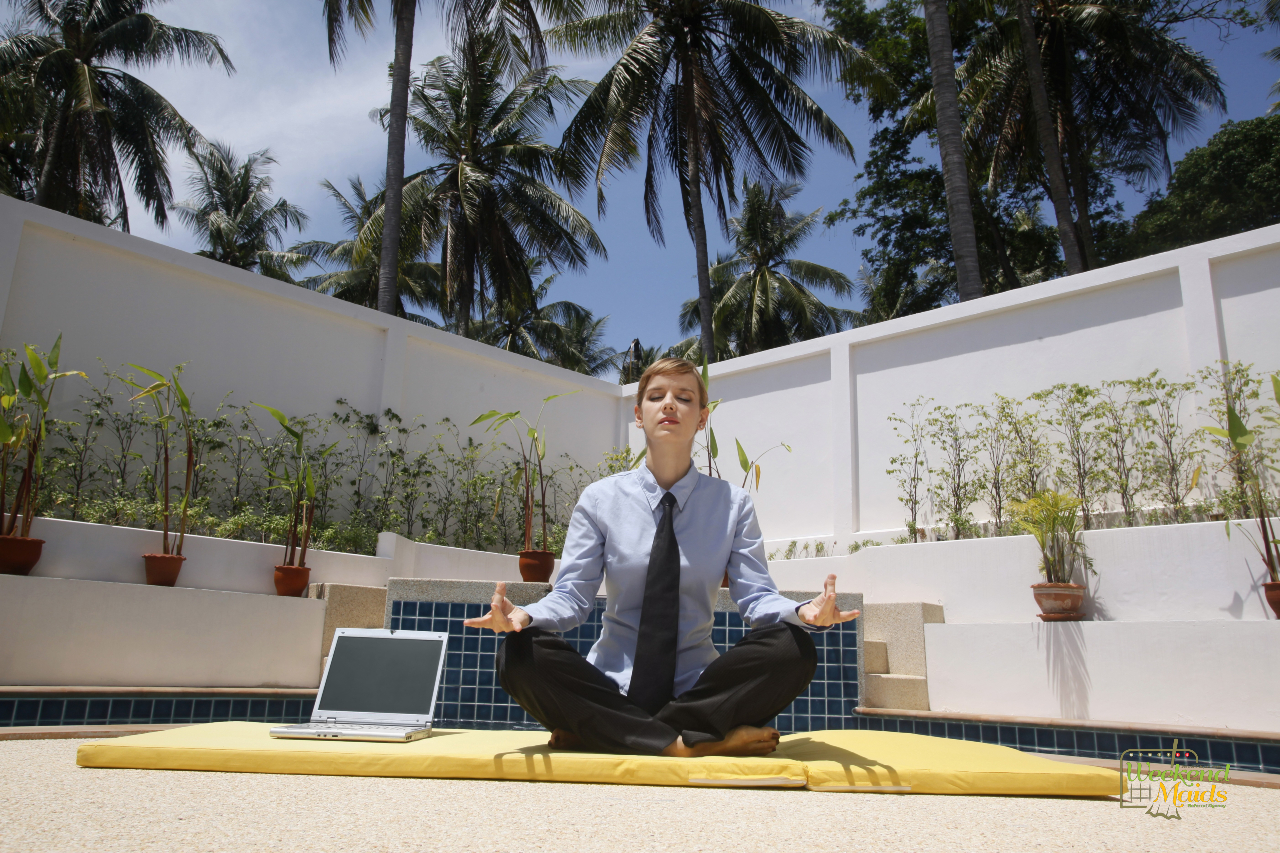
Meditation & Mindfulness (In These Tough Times)
During this time, life may have been quite stressful or all over the place, but there are ways to recollect your thoughts and calm down-Meditation. Meditation is a form of relaxing your mind through chanting or in silence. Similarly, peace of mind is a state of calmness, without worries or anxiety. Besides relieving yourself from mental burdens, meditation and peace of mind can be very beneficial.
Some find meditation difficult or unnecessary, so what is the purpose of meditation? Its main purpose is to reduce stress, anxiety, depression, or pain and increase peace and well-being in the mind. The overall goal is to wake your consciousness and be aware of your thoughts, emotions, and actions.
Many people don’t think they need meditation for different reasons like it sounding boring, not being able to sit still, not having time, or your mind being too fast. These are common excuses that people make to avoid meditation, but there are answers to all of them. For example, if you think you cannot sit still, know that meditation doesn’t exactly require you to be a statue. If you move around a little bit, it’s ok and completely normal! Another example is not having enough time, but you do not need hours to meditate. If you put your mind to it, you might be able to meditate in ten minutes (which I think is all we can all spare these days). You can start meditating now! But how?
There are a few steps to start meditation-
- Get in a comfortable position. You can sit or lie down (whatever works for you!).
- Close your eyes. This may seem obvious but closing your eyes helps to focus, and prevent yourself from getting distracted from other things in the room.
- Breathe naturally. While you may have heard you should control your breathing while meditating, it’s more effective to just breathe normally.
- Finally, focus your attention on your breath. How you inhale and exhale, and how your body moves with each breath.
Meditating isn’t as hard as you thought, right? There are many ways you can go beyond this “level” of meditation, but these are four easy steps for beginners. Now that we have started meditating, how is it beneficial?
There are many advantages including stress reduction, anxiety control, emotional health and self-awareness, lengthening your attention span, possible reduction of age-related memory loss, help to fight addictions, improving sleep, decreasing blood pressure, and many others. Stress reduction is something I think that many of us can benefit from. As I said previously, with the global pandemic going on right now, you might find yourself quite stressed, and meditation can be a big relief. Meditation can also help your self-awareness, esteem, and confidence. Self-inquiry meditation mainly aims to help you develop a better understanding of yourself and how you relate to others around you. As an effect of reducing stress, meditation can also help improve your sleep. When you’re stressed, you may have racing thoughts, which can even lead to insomnia. Meditation helps to redirect or control these thoughts. Now that you know about meditation, what is mindfulness?
Mindfulness is the state of being conscious or aware of something. An example of mindfulness is paying close attention to things. This may seem simple, but paying attention can be quite difficult in a busy world. Take your time and analyze what your five senses-touch, sound, sight, smell and taste are feeling.
There are three main components of mindfulness-intention, attention, and attitude. Intention is what you seek from being mindful. Common desired outcomes of mindfulness are stress reduction, greater emotional balance or to discover your true nature. Your intentions will help to motivate you to practice mindfulness daily. As I said before, attention is a big part of mindfulness. Attention will help you fully understand and interpret your inner and outer experiences. Your attention can be built through several different types of meditation. Finally, Attitude is quite significant to becoming mindful. You need to pay attention to certain attitudes and inherit them for yourself. For instance, some mindful attitudes are acceptance, kindness, and being uncritical. Similar to meditation, mindfulness has numerous benefits, alike to those of meditation. But, how are meditation and mindfulness different?
Meditation and mindfulness have their similarities and differences, but they both are closely related. There are many types of meditation, like visualization or contemplation. However, mindfulness is a type of meditation that requires bringing your full mind and attention to one thing. According to Lecia Bushak in Medical Daily, “Meditation is a large umbrella term that encompasses the practice of reaching ultimate consciousness and concentration, to acknowledge the mind and, in a way, self-regulate it.” Mindfulness is a small branch of meditation, that requires focus, attention, and observing the five senses.
All in all, several benefits come from meditation and mindfulness. I highly encourage you to try out these types of meditation and see how they help you become your best self!
